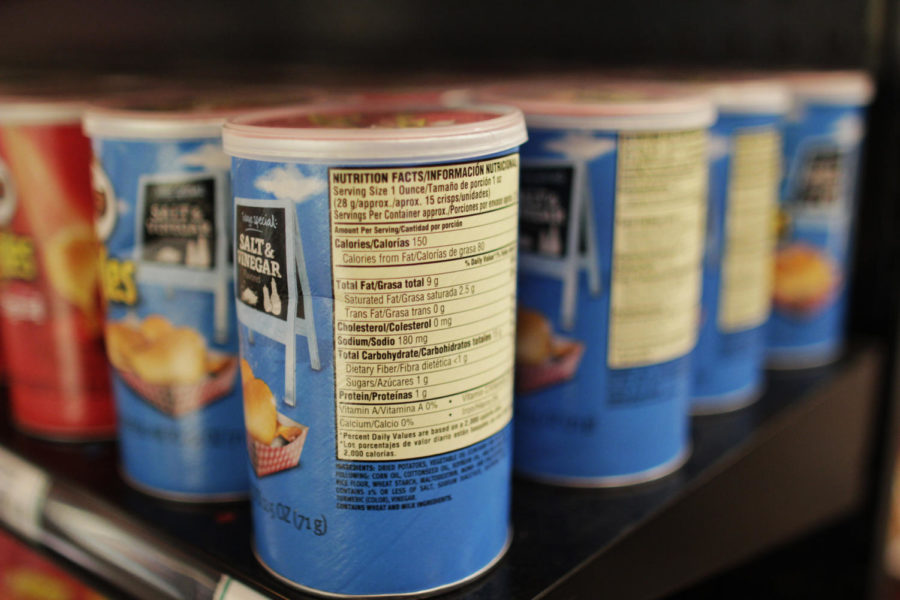Editorial: FDA proposal makes labels easier to read
Kelby Wingert/Iowa State Daily
The Food and Drug Administration has proposed changes for nutrition fact labels to help educate the public on healthy eating habits and prevent obesity.
March 12, 2014
In the past, walking into the grocery store and finding food that was considered “good” for you had been a challenge.
Picking up a can of soup and reading the label does not tell you what percentage of additives or sugars the product may contain.
To solve this and other problems, the Food and Drug Administration has announced new regulations for the labels printed on foodstuffs.
Now, when looking at the same can of soup, the display of nutrition facts will be changed and the daily value percentage has been placed first, in hopes that this will change the way we read the label.
One of the changes that is being included on the new labels is the amount of added sugars in the product. We all remember when we were little kids and our mothers said that too much sugar was bad for us. With the new labels, we will be able to tell exactly how much sugar is being added to the products we buy.
Also, a new column that includes the amount of calories per serving size is being added to food labels. No one in the grocery store wants to stand there doing mental math to figure out how many calories they would be eating in just one serving. Calculating a serving size is further complicated when people don’t even know exactly what a given serving size is.
In recent years, the portion size has changed, but what has not been changed is the serving sizes printed on food labels.
Nutritional facts should be based on what people are actually eating and compared to a normal human diet, rather than the diet that people should theoretically be eating. It seems that in today’s world the only people who are actually counting calories are people who are dieting, or watching their weight.
More so than others, college students do not exactly count their calories when grabbing a slice of pizza.
Therefore it is safe to assume we are not sticking to the amount of calories we are supposed to consume. Basing the portion size on what people are actually eating will undoubtedly be more beneficial to the consumer.
“By revamping the Nutrition Facts label, FDA wants to make it easier than ever for consumers to make better informed food choices that will support a healthy diet,” said Michael R. Taylor, the FDA’s deputy commissioner for foods. “To help address obesity, one of the most important public health problems facing our country, the proposed label would drive attention to calories and serving sizes.”
Iowa State prides itself on being a healthy campus, so it is no surprise that the need for the new labels is in high demand. Students with food allergies or students that are diabetic have to pay closer attention to the amount of additives in a food product.
These new labels will make it easier for these students to regulate their health, making it easier for students to not only find the information but understand what they are reading. Students that are paying attention to what is being written on these labels are going to greatly appreciate the new design.
“This is a big deal, and it’s going to make a big difference for families all across this country,” said First Lady Michelle Obama. Hopefully this will not only make a difference in the meals we are eating, but move Iowa State students to have healthier eating habits and an healthier overall lifestyle.







